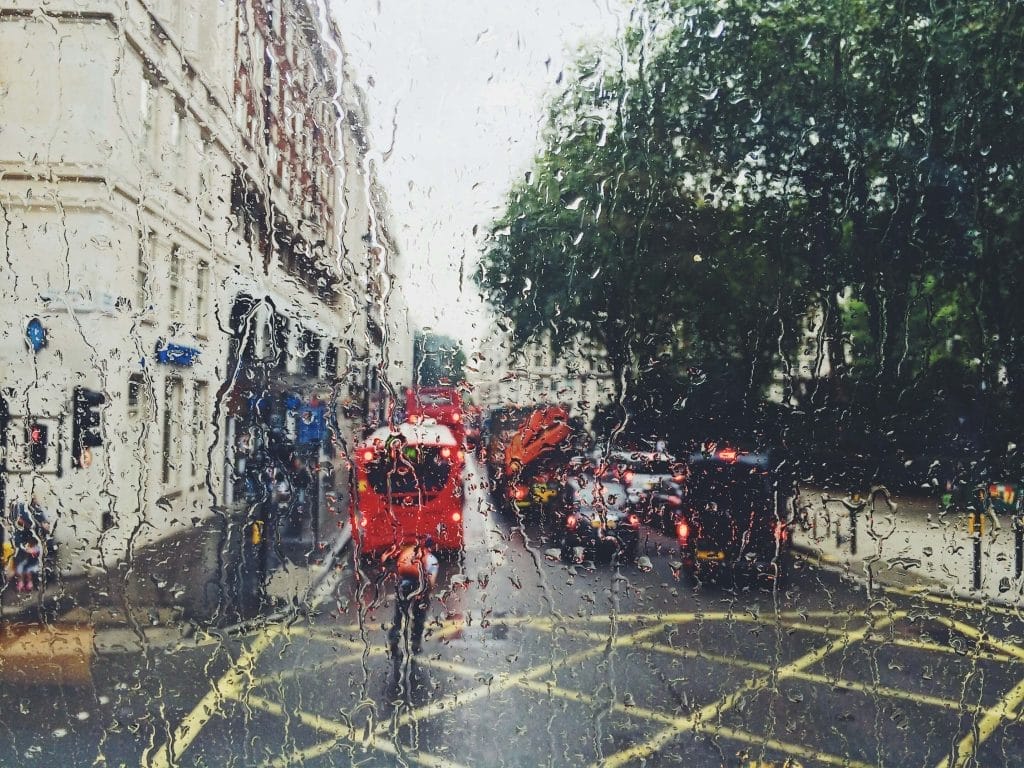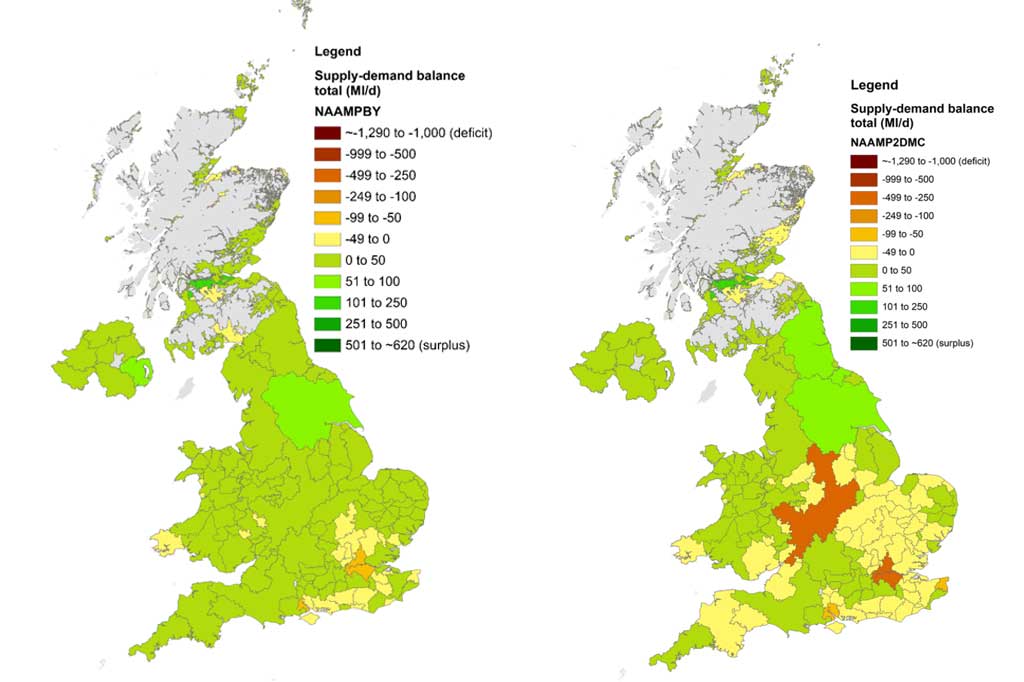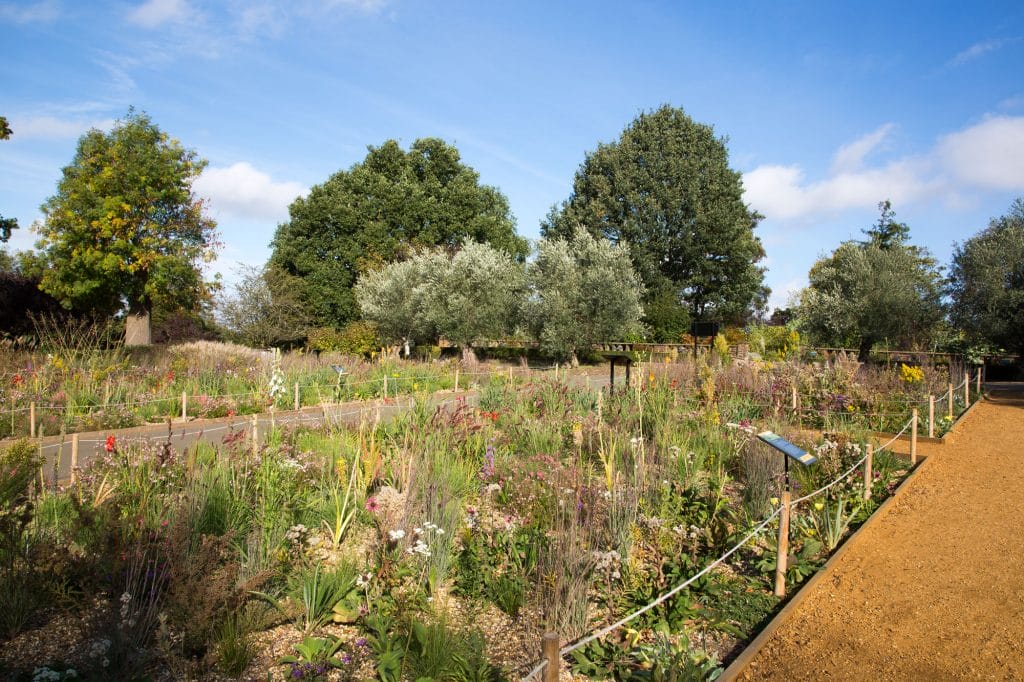Why do we need to use water efficiently?
The UK is typically thought of as a wet and rainy country, and to some degree this is true, particularly in the west and north of the country. However, in London and the South East of England total rainfall is not actually particularly high when compared to other cities globally.
Rainfall is a key component of the water cycle and is necessary to keep rivers flowing. It is also key in recharging aquifers, which are areas of permeable rock that store groundwater. Low or sporadic rainfall impacts water supply and means that water restrictions are needed.
When and how much it rains is influenced by infinitely complex and dynamic atmospheric weather patterns. These patterns are being disrupted by more Greenhouse Gases in the atmosphere, resulting in a hotter climate – aka the Climate Crisis.
Weather patterns are changing globally, but not consistently. Some regions are experiencing more rainfall, some less.
What is happening across all regions, however, is the disruption of existing weather patterns, erratic changes in weather and unseasonal weather, and an increasing number of extreme weather events.
In the UK, we are having more heavy rainfall events, often leading to localised flooding, with long stretches of little to no rainfall in between, particularly in summer. This effectively is the worst of both worlds, leaving us vulnerable to both more floods and more droughts.

A rain soaked view of London. Photo by Anjana Menon on Unsplash
Too much demand, too little supply
At the time of writing, the UK has just experienced its driest spring on record. We have had almost no rain in London throughout April and May, and very little so far in June.
70% of London’s tap water comes from reservoirs to the west of the city, which are fed from the River Thames. The Thames, as with all rivers, is ultimately fed by precipitation from the atmosphere, whether as rain or snow. Currently, these reservoir levels are significantly below average due to the dry conditions.
As previously mentioned, rainfall is also required to recharge aquifers, from which we draw the remaining 30% of our water. The aquifer that London sits on, the London Basin Chalk Aquifer, has been increasingly utilised for the last few hundred years, leading to concerns that its supply of fresh water may not be as consistent in the future.
The South East of England, including London, has the UK’s highest risk of reduced access to freshwater, and is already one of the worst regions in terms of water demand vs supply (Figure 1). In fact, South London is one of the few zones in the UK which currently demands more water than it supplies and London is already classed as “significantly water stressed” by the Environment Agency.
This is due to a combination of climate change impacts across the region and high levels of population and current water extraction. Therefore, of all regions in the UK, it is Londoners who must be the most water conscious and proactive, to ensure that we live in balance with what the earth can supply us through natural processes.

The current (left) and 2050 (right) water availability situation across the UK expressed as the balance between supply and demand. Reproduced from HR Wallingford (2020).
What we are doing at the Horniman
Our highest areas of water usage at the Horniman are, unsurprisingly, in the Gardens and the Aquarium. Both teams have devoted considerable effort to increasing their water use efficiency.
In the gardens, Xerophytic (drought tolerant) plantings have been introduced across the Gardens The Grasslands Gardens require little to no additional watering beyond what is delivered by natural rainfall.
The second area, alongside the front of the Museum adjacent to London Road, was planted on top of layers of recycled concrete aggregate and gravel to improve drainage. This area also does not require additional watering, significantly reducing the amount of water used for plant irrigation in the Gardens.
Where irrigation is required, the Gardens team uses drip line irrigators (tubes with small emitters laid next to the plants), as much as possible to channel water directly into the root zone. This reduces losses from evaporation and means less water is used overall. In very hot weather or when an area is newly planted, we use some sprinklers.

Climate change bed at the front of the Horniman
In the Aquarium, the largest source of wasted water comes from the Reverse Osmosis (RO) filters. These filters are part of the process used to turn hard London tap water into the perfect fresh or salt-water environment for the aquarium flora and fauna. The filters have a high rejection rate, with over two thirds of the incoming water bypassing the filter entirely.
The Aquarium team identified this as an issue and worked to divert this waste RO water into a holding tank. This is now being used to flush the gardens toilets and for irrigating the gardens.
The exact quantity of water saved through this process is unknown, but could be over 500,000L a year. We are investigating installing water meters on the holding tank to see how much waste RO water is used. We are also investigating other toilets that the holding tank can be connected to, to maximise our usage of the waste RO water.
We are also currently in the design process for renovating our Gardens toilets, and as part of this we will look to install low flow toilets and smart sensor taps.
We are always on the lookout for ways we can reduce water use across our site. If you have any suggestions or have found methods of technologies that have worked for you, please get in touch.

The Grasslands Garden coming into flower
What you can do
Over 70% of UK freshwater withdrawals are from households, which is one of the highest proportions in the world. Therefore, water use is one area where every individual contribution really does make a difference.
The first and most obvious thing to do is reduce your usage.
- Take shorter showers
- Water plants in the morning or evening, watering only the roots
- Wash cars with a bucket and sponge
- Don’t leave the tap running when brushing your teeth
- Don’t use the washing machine for small loads of clothes
- Ensure the dishwasher is full before using it.
The key thing to remember about reducing water use is you don’t need to live like a Spartan. If you love a bath or taking long showers and shudder at the thought of cutting down, then prioritise other areas you can cut down first, such as reducing the number of times you wash your car.
It’s better to make a positive change in a different area than give up on the whole idea and do nothing while feeling guilty all the time.
If you can afford them, technological solutions such as low flow shower heads can also help with reducing usage while maintaining a similar lifestyle. If you’re on a budget, there are some creative solutions that can have similar benefits. For example, filling a plastic bottle up with sand or small stones and placing it in your toilet bowl will displace water and reduce the volume of water used with each flush. Make sure the bottle is well sealed!
The second strategy is to make informed choices around food and beverage consumption. Many foods and beverages require a significant amount of water to produce, such as beef, pork, dairy products, nuts, and rice.
While changing your buying habits and diet won’t make any local water savings, on a global scale it helps reduce water consumption by lowering demand for high resource-input products.
Reducing the amount of these products you consume not only saves water, in most cases it also reduces Greenhouse Gas emissions and biodiversity loss. The Water Footprint Network has information on the average water footprint of several common products.
Other strategies for reducing your water footprint often revolve around reducing the need for water use in the first place, like in the Xerophytic plantings at the Horniman. For those with gardens, this could take the form of planting around your down pipes, utilising concentrated rainfall from your roof to provide “free” water in a partially covered area.
Storing rainwater in tanks for use in the garden is another worthwhile option and presents another opportunity to use downpipes to capture the rainwater that lands on your roof.
Eliminating the need to use water in the first place provides the greatest opportunity for creative and wacky ideas. If you are up for it, you could wash your car in the rain – or even better, get some children to do it for you – a productive way to spend a boring rainy weekend. This won’t provide the mirror clean finish you would expect from using tap water, but it will work for getting a filthy car relatively clean.
Whatever approach you choose to take, you will be having a positive impact on the future of water availability. If everyone chooses one or two small actions to reduce their water footprint, then we can work together to hopefully avoid severe water restrictions in the future.


